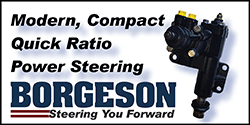Yep, at some point port volume is what is requiredFrom what I understand 280-310 cfm can make all the power most would want from this type of head but it's the port volume and cross sections that's holding these engines back from turning enough rpm to make the power, coming from NON porter/builder. But that's my take.
You are using an out of date browser. It may not display this or other websites correctly.
You should upgrade or use an alternative browser.
You should upgrade or use an alternative browser.
TF Porting
- Thread starter Earlie A
- Start date
-
Earlie A
Well-Known Member
Agree. Then add to that the inner runner vs outer runner angle of approach.Honestly, I have almost completely stopped flowing heads w/o the intake it is destined to wear........
Earlie A
Well-Known Member
That's what I'm betting on.Ya I bet if an decent sized engine trying to make peak power in the 6,000+ rpm they will love that 2.3" sq.
Earlie A
Well-Known Member
Tying up a few loose ends from yesterday. PRH asked about test/flow data on the TF head with the swirl vein removed. I do have a little bit of data, but it would be meaningless to post it. The port is so dissimilar from anything else that a comparison is pointless. I've just made too many other changes. Maybe when I get finished with port 3/6 I'll remove the vein entirely to see what happens.
I'm posting a graph below for two purposes. We were discussing yesterday how flow separation takes over in the 290-300 cfm range. The two tests shown are not a Trick Flow head, but the point remains the same. Below about 0.460" lift, the curtain area around the valve is the minimum cross sectional area in the port. Flow is much more stable in this region. Above 0.460" lift the pushrod pinch (or some area with extreme flow separation) is the MCSA. Things are much harder to control.
The real reason I chose this graph is because I got a private message about 45 vs 50 deg seats. This graph demonstrates my experience on the SBM head. At lifts below 0.200", the 45 deg seat almost always flows more. There is simply more curtain area available. Somewhere around 0.200"-0.250" lift things begin to change and the 50 deg seat CAN flow more. This is not because the 50 deg seat now has more curtain area. It is because the 50 deg seat is forming a more efficient venturi. In these low lift regions seat angles and widths, top cut angles and chamber shape play a big role in venturi and flow efficiency. You can see the flow curves weave back and forth. The changes are subtle, but they are real. After 0.350"-0.400" lift the rest of the port really starts affecting the flow curve so the 45 deg vs 50 deg seat comparison is dependent on lots of other things.
Edit: Don't look at the high lift flow and come to the conclusion that 50 deg seats really help up high. I have no idea how similar/dissimilar these ports are. I just grabbed a couple of curves to demonstrate the low lift 45 vs 50 seat angles.

I'm posting a graph below for two purposes. We were discussing yesterday how flow separation takes over in the 290-300 cfm range. The two tests shown are not a Trick Flow head, but the point remains the same. Below about 0.460" lift, the curtain area around the valve is the minimum cross sectional area in the port. Flow is much more stable in this region. Above 0.460" lift the pushrod pinch (or some area with extreme flow separation) is the MCSA. Things are much harder to control.
The real reason I chose this graph is because I got a private message about 45 vs 50 deg seats. This graph demonstrates my experience on the SBM head. At lifts below 0.200", the 45 deg seat almost always flows more. There is simply more curtain area available. Somewhere around 0.200"-0.250" lift things begin to change and the 50 deg seat CAN flow more. This is not because the 50 deg seat now has more curtain area. It is because the 50 deg seat is forming a more efficient venturi. In these low lift regions seat angles and widths, top cut angles and chamber shape play a big role in venturi and flow efficiency. You can see the flow curves weave back and forth. The changes are subtle, but they are real. After 0.350"-0.400" lift the rest of the port really starts affecting the flow curve so the 45 deg vs 50 deg seat comparison is dependent on lots of other things.
Edit: Don't look at the high lift flow and come to the conclusion that 50 deg seats really help up high. I have no idea how similar/dissimilar these ports are. I just grabbed a couple of curves to demonstrate the low lift 45 vs 50 seat angles.
PRH
Well-Known Member
What about numbers from the lowest flowing ootb TF port you’ve tested?
Earlie A
Well-Known Member
Here's all I have on stock 190 CNC Trick Flow.What about numbers from the lowest flowing ootb TF port you’ve tested?
I remember one of PBR's posts where he talked about spending 8-10 minutes on each port to get them to flow 300-305. He never said what he found but my guess is that it's short side related.
PRH
Well-Known Member
Pretty big spread for a cnc ported head imo.
That #5 is just lagging behind.
But since a minor tweak to the SSR wouldn’t have much impact at all to the port area……. I wonder how much it would really be holding things back.
And then, is it that far behind if you tested them all with the manifold and carb attached?
That #5 is just lagging behind.
But since a minor tweak to the SSR wouldn’t have much impact at all to the port area……. I wonder how much it would really be holding things back.
And then, is it that far behind if you tested them all with the manifold and carb attached?
Earlie A
Well-Known Member
I wish I had taken the time to investigate it more before porting the really good port. Your perspective is interesting, a bit different than mine. What I see is 4 ports that loose the short side flow at 0.550 lift and one that hangs on to the short side through 0.700 lift. Regardless of the cause, I'm in agreement that it's a larger spread than I would expect to see on CNC cut ports.
Columns 2,3,4,5 are all on the same head and that head is probably a few years older than the 'good' head in column 1. Maybe the CNC program is different? I know for a fact that not all Trick Flow heads come from the same foundry. They use several different suppliers and 2-3 of those foundries have closed in recent years. Wouldn't think the casting would impact the CNC port job but who knows what else is going on.
I still have 2 untouched ports on the good head. I'll test them.
Columns 2,3,4,5 are all on the same head and that head is probably a few years older than the 'good' head in column 1. Maybe the CNC program is different? I know for a fact that not all Trick Flow heads come from the same foundry. They use several different suppliers and 2-3 of those foundries have closed in recent years. Wouldn't think the casting would impact the CNC port job but who knows what else is going on.
I still have 2 untouched ports on the good head. I'll test them.
PRH
Well-Known Member
With as many cnc ported heads as TF offers, I’d be surprised if they didn’t have a few cnc machines.
Maybe slight differences between which machine did the porting?
The test to me would be similar to what Kaase did with his heads.
Test a “crappy” set on the engine, then do the minimum amount of work possible to at least sort of fix(or just improve)them, and put them back on and see what it was worth.
Obviously, if it was worth anything, I’d expect it would be worth more on a build where it was using up the heads and the hp/ci was higher rather than the opposite.
I guess what I’m saying is, I doubt it would do much of anything on a 450-500hp(or less) type stroker.
Maybe slight differences between which machine did the porting?
The test to me would be similar to what Kaase did with his heads.
Test a “crappy” set on the engine, then do the minimum amount of work possible to at least sort of fix(or just improve)them, and put them back on and see what it was worth.
Obviously, if it was worth anything, I’d expect it would be worth more on a build where it was using up the heads and the hp/ci was higher rather than the opposite.
I guess what I’m saying is, I doubt it would do much of anything on a 450-500hp(or less) type stroker.
Earlie A
Well-Known Member
The radius of curvature can be anything you choose to grind.It's not really "taller", it's a tighter (smaller) radius due to the larger valve and consequenly opening up the bowl.
-
Similar threads
- Replies
- 57
- Views
- 4K
- Replies
- 77
- Views
- 5K
















